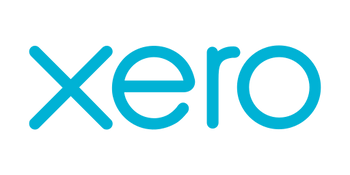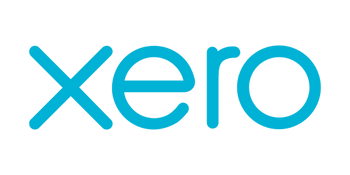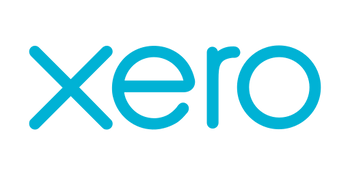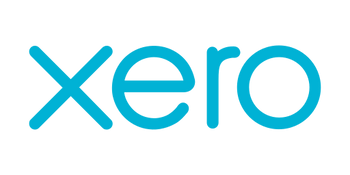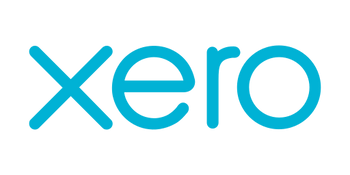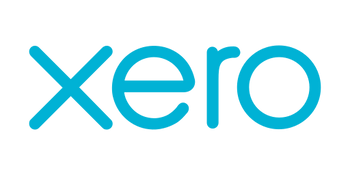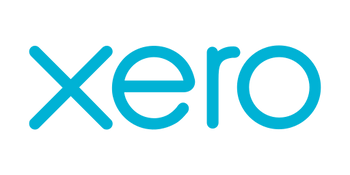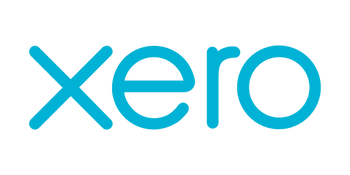{"id":9452921880850,"title":"Google Tasks Get a Task Integration","handle":"google-tasks-get-a-task-integration","description":"Certainly, the Google Tasks API endpoint \"Get a Task\" offers developers a powerful tool to retrieve a single task from a user's task list. The capabilities of this API end point, when properly utilized, can solve various problems associated with task management applications. Here is what can be done and what problems can be solved in the context of this API:\n\n\u003ch2\u003eFunctionalities of \"Get a Task\" API End point:\u003c\/h2\u003e\n\n\u003col\u003e\n \u003cli\u003e\n\u003cstrong\u003eData Retrieval:\u003c\/strong\u003e The primary function of the \"Get a Task\" API end point is to retrieve detailed information about a specific task, including its title, due date, status (completed or not), and description. This granular access allows for a focused approach to task management.\u003c\/li\u003e\n\n \u003cli\u003e\n\u003cstrong\u003eTask Synchronization:\u003c\/strong\u003e Integrating the \"Get a Task\" API end point allows multiple devices and platforms to stay synchronized. A user can access the task's details on a smartphone, tablet or computer and see the same information, helping to maintain consistency across platforms.\u003c\/li\u003e\n\n \u003cli\u003e\n\u003cstrong\u003eSingle Task Focus:\u003c\/strong\u003e For applications that require attention to a specific task, such as reminders or specialized task views, this API end point offers the ability to pull just the necessary data for that task without requiring bulk data processing.\u003c\/li\u003e\n\u003c\/ol\u003e\n\n\u003ch2\u003eProblems That Can Be Solved:\u003c\/h2\u003e\n\n\u003col\u003e\n \u003cli\u003e\n\u003cstrong\u003eTask-Related Reminders:\u003c\/strong\u003e By retrieving the task's details, developers can build reminder systems that alert users about deadlines or other time-sensitive aspects of a task. This can help users manage their time and priorities more effectively.\u003c\/li\u003e\n\n \u003cli\u003e\n\u003cstrong\u003eImproved UI\/UX:\u003c\/strong\u003e Fetching individual task data makes it possible to design focused and clutter-free user interfaces for task-related applications. This enables users to concentrate on one task at a time, enhancing productivity.\u003c\/li\u003e\n\n \u003cli\u003e\n\u003cstrong\u003ePersonalization:\u003c\/strong\u003e When a task is retrieved, its data can be used to offer a personalized experience. For example, sorting or highlighting tasks based on status or due date can help users tackle the most urgent tasks first.\u003c\/li\u003e\n\n \u003cli\u003e\n\u003cstrong\u003eIntegration with Other Services:\u003c\/strong\u003e Developers can create integrations with other tools and services, such as calendars or project management systems, by extracting the necessary information from a specific task using the \"Get a Task\" API end point.\u003c\/li\u003e\n\n \u003cli\u003e\n\u003cstrong\u003eStatus Updates:\u003c\/strong\u003e The ability to fetch individual task details can simplify the process for users to update status on a task-by-task basis, improving the tracking of task completion and progress.\u003c\/li\u003e\n\u003c\/ol\u003e\n\nIn conclusion, the \"Get a Task\" API end point from Google Tasks is a valuable feature for developers creating task-oriented applications. It offers precise data retrieval capabilities, enhances synchronization across devices, and provides a means to create personalized and streamlined user experiences. By utilizing this API end point, applications can address issues related to reminders, UI\/UX design, personalization, service integration, and status monitoring, all of which contribute to efficient and effective task management for users.","published_at":"2024-05-14T03:08:55-05:00","created_at":"2024-05-14T03:08:56-05:00","vendor":"Google Tasks","type":"Integration","tags":[],"price":0,"price_min":0,"price_max":0,"available":true,"price_varies":false,"compare_at_price":null,"compare_at_price_min":0,"compare_at_price_max":0,"compare_at_price_varies":false,"variants":[{"id":49127223755026,"title":"Default Title","option1":"Default Title","option2":null,"option3":null,"sku":"","requires_shipping":true,"taxable":true,"featured_image":null,"available":true,"name":"Google Tasks Get a Task Integration","public_title":null,"options":["Default Title"],"price":0,"weight":0,"compare_at_price":null,"inventory_management":null,"barcode":null,"requires_selling_plan":false,"selling_plan_allocations":[]}],"images":["\/\/consultantsinabox.com\/cdn\/shop\/files\/93e019f7eb0c1cb3ce3d02a9035ed5a5_15dec983-97e6-4911-908f-4e061827be12.png?v=1715674136"],"featured_image":"\/\/consultantsinabox.com\/cdn\/shop\/files\/93e019f7eb0c1cb3ce3d02a9035ed5a5_15dec983-97e6-4911-908f-4e061827be12.png?v=1715674136","options":["Title"],"media":[{"alt":"Google Tasks Logo","id":39160827904274,"position":1,"preview_image":{"aspect_ratio":1.056,"height":284,"width":300,"src":"\/\/consultantsinabox.com\/cdn\/shop\/files\/93e019f7eb0c1cb3ce3d02a9035ed5a5_15dec983-97e6-4911-908f-4e061827be12.png?v=1715674136"},"aspect_ratio":1.056,"height":284,"media_type":"image","src":"\/\/consultantsinabox.com\/cdn\/shop\/files\/93e019f7eb0c1cb3ce3d02a9035ed5a5_15dec983-97e6-4911-908f-4e061827be12.png?v=1715674136","width":300}],"requires_selling_plan":false,"selling_plan_groups":[],"content":"Certainly, the Google Tasks API endpoint \"Get a Task\" offers developers a powerful tool to retrieve a single task from a user's task list. The capabilities of this API end point, when properly utilized, can solve various problems associated with task management applications. Here is what can be done and what problems can be solved in the context of this API:\n\n\u003ch2\u003eFunctionalities of \"Get a Task\" API End point:\u003c\/h2\u003e\n\n\u003col\u003e\n \u003cli\u003e\n\u003cstrong\u003eData Retrieval:\u003c\/strong\u003e The primary function of the \"Get a Task\" API end point is to retrieve detailed information about a specific task, including its title, due date, status (completed or not), and description. This granular access allows for a focused approach to task management.\u003c\/li\u003e\n\n \u003cli\u003e\n\u003cstrong\u003eTask Synchronization:\u003c\/strong\u003e Integrating the \"Get a Task\" API end point allows multiple devices and platforms to stay synchronized. A user can access the task's details on a smartphone, tablet or computer and see the same information, helping to maintain consistency across platforms.\u003c\/li\u003e\n\n \u003cli\u003e\n\u003cstrong\u003eSingle Task Focus:\u003c\/strong\u003e For applications that require attention to a specific task, such as reminders or specialized task views, this API end point offers the ability to pull just the necessary data for that task without requiring bulk data processing.\u003c\/li\u003e\n\u003c\/ol\u003e\n\n\u003ch2\u003eProblems That Can Be Solved:\u003c\/h2\u003e\n\n\u003col\u003e\n \u003cli\u003e\n\u003cstrong\u003eTask-Related Reminders:\u003c\/strong\u003e By retrieving the task's details, developers can build reminder systems that alert users about deadlines or other time-sensitive aspects of a task. This can help users manage their time and priorities more effectively.\u003c\/li\u003e\n\n \u003cli\u003e\n\u003cstrong\u003eImproved UI\/UX:\u003c\/strong\u003e Fetching individual task data makes it possible to design focused and clutter-free user interfaces for task-related applications. This enables users to concentrate on one task at a time, enhancing productivity.\u003c\/li\u003e\n\n \u003cli\u003e\n\u003cstrong\u003ePersonalization:\u003c\/strong\u003e When a task is retrieved, its data can be used to offer a personalized experience. For example, sorting or highlighting tasks based on status or due date can help users tackle the most urgent tasks first.\u003c\/li\u003e\n\n \u003cli\u003e\n\u003cstrong\u003eIntegration with Other Services:\u003c\/strong\u003e Developers can create integrations with other tools and services, such as calendars or project management systems, by extracting the necessary information from a specific task using the \"Get a Task\" API end point.\u003c\/li\u003e\n\n \u003cli\u003e\n\u003cstrong\u003eStatus Updates:\u003c\/strong\u003e The ability to fetch individual task details can simplify the process for users to update status on a task-by-task basis, improving the tracking of task completion and progress.\u003c\/li\u003e\n\u003c\/ol\u003e\n\nIn conclusion, the \"Get a Task\" API end point from Google Tasks is a valuable feature for developers creating task-oriented applications. It offers precise data retrieval capabilities, enhances synchronization across devices, and provides a means to create personalized and streamlined user experiences. By utilizing this API end point, applications can address issues related to reminders, UI\/UX design, personalization, service integration, and status monitoring, all of which contribute to efficient and effective task management for users."}

